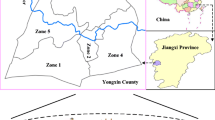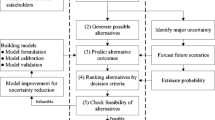Abstract
Operating a multi-purpose hydropower reservoir during flooding and high inflow events is a challenging and complicated task. Three main elements contribute to this complexity: addition of minimizing flood damage to the set of objectives of the problem, exponential boost in inflow forecast uncertainty-driven risks as a result of the high sensitivity of the outcomes to inflow forecasts, and the unavoidable necessity of making a decision within a very short time although the decision making process requires comprehensive analysis. A Risk-Informed Decision Making (RIDM) framework as a pre-developed guideline for operational planners might be the only solution to the problem.We explain the structure of such a framework in the literature, and implement an RIDM framework for the Cheakamus River System. In developing the RIDM framework in our study, we make several modifications to the previous RIDM framework for Cheakamus River System by minimizing subjectivity in the decision making process, incorporating comprehensive risk consideration in the process, and taking account of the entire range of operational alternatives. We also explain how the framework could be developed for other case studies.



Similar content being viewed by others
References
Alipour MH (2012) Applying the virtual structure of a risk-informed decision making framework for operating small hydropower reservoirs during high inflow events. Case study: Cheakamus River System. University of British Columbia, Dissertation
Alipour MH, Shamsai A, Ahmady N (2010) A new fuzzy multicriteria decision making method and its application in diversion of water. Expert Syst Appl 37:8809–8813
Andre FJ, Cardenete MA, Romero C (2010) Designing public policies: An approach based on multi-criteria analysis and computable general equilibrium modeling. Springer, Berlin
BC Hydro (2005) Cheakamus project water use plan
BC Hydro (2011) Generation operating order: Cheakamus project
Brans JP, Vincke PH, Marshal B (1986) How to select and how to rank projects: the PROMETHEE method. Eur J Oper Res 24:228–238
Cheng CT, Shen JJ, Wu XY, Chau KW (2012) Operation challenges for fast-growing China’s hydropower systems and respondence to energy saving and emission reduction. Renew Sust Energ Rev 16:2386–93
Coulibaly P, Anctil F, Bobe B (2000) Daily reservoir inflow forecasting using artificial neural networks with stopped training approach. J Hydrol 230:244–257
Dezfuli H, Stamatelatos M, Maggio G, Everett C, Youngblood R, Rutledge P, Benjamin A, Williams R, Smith C, Guarro S (2010) NASA risk-informed decision-making handbook, version 1.0. The national aeronautics and space administration
Federal Energy Regulatory Commission (2014a) Introduction to risk informed decision making - draft. Available at http://www.ferc.gov/
Federal Energy Regulatory Commission (2014b) Concrete dams - draft. Available at http://www.ferc.gov/
Federal Energy Regulatory Commission (2014c) Internal erosion - draft. Available at http://www.ferc.gov/
Federal Energy Regulatory Commission (2014d) Probabilistic flood hazard analysis - draft. Available at http://www.ferc.gov/
Federal Energy Regulatory Commission (2014e) Dam breach - draft. Available at http://www.ferc.gov/
Federal Energy Regulatory Commission (2014f) Estimation of life safety consequences - draft. Available at http://www.ferc.gov/
Federal Energy Regulatory Commission website (2014) Available at http://www.ferc.gov/
Fourer R, Gay D M, Kernighan B W (2003) AMPL, A modeling language for mathematical programming. 2nd edition. Thomson Books/Cole
Hoyland K, Kaut M, Wallace SW (2003) A heuristic for moment-matching scenario generation. Comput Optim Appl 24(2-3):169–185
Karamouz M, Ahmadi A, Moridi A (2009) Probabilistic reservoir operation using Bayesian stochastic model and support vector machine. Adv Water Resour 32:1588–1600
Kaut M (2003) Updates to the published version of a heuristic for moment-matching scenario generation by K. Hoyland, M. Kaut, and S.W. Wallace. Available at http://work.michalkaut.net/
Kaut M, Lium AG (2007) Scenario generation: property matching with distribution functions.Working paper, available at http://work.michalkaut.net/, Scenario generation
Khan KW, Flint-Petersen L, Chiew H (2011) Near real time forecasting of water level along lower Fraser River during freshet 2011. In: Canadian water resources association conference. Vancouver, Canada
Labadie JW, Zheng F, Wan Y (2012) Optimal integrated operation of reservoir-assisted stormwater treatment areas for estuarine habitat restoration. Environ Model Softw 38:271–282
Latorre JM, Cerisola S, Ramos A (2007) Clustering algorithms for scenario tree generation: Application to natural hydro inflows. Eur J Oper Res 181:1339–1353
Lyubarskiy A, Kuzmina I, El-Shanawany M (2011) Advances in risk informed decision making - IAEAs approach. Nordic PSA conference. Johannesberg Castle, Sweden
NEOS server (2012) Available at www.neos-server.org
Ngo LL, Madsen H, Rosbjerg D, Pedersen CB (2008) Implementation and comparison of reservoir operation strategies for the Hoa Binh Reservoir, Vietnam using the Mike 11 Model. Water Resour Manag 22(4):457–472
Quick MC, Pipes A (1977) UBC Watershed Model. Hydrol Sci Bull 22(1):153–161
Reddy MJ, Kumar DN (2006) Optimal reservoir operation using multi-objective evolutionary algorithm. Water Resour Manag 20:861–878
Reed PM, Hadka D, Herman JD, Kasprzyk JR, Kollat JB (2013) Evolutionary multiobjective optimization in water resources: The past, present, and future. Adv Water Resour 51:438–456
Saaty T (1980) The analytic hierarchy process. McGraw-Hill, New York
Sadeque F (2010) Inter-office memo to Vladimir Plesa: High level assessment of Cheakamus River Flood Damage DRAFT
Schardong A, Simonovic SP, Vasan A (2013) Multiobjective evolutionary approach to optimal reservoir operation. J Comput Civ Eng 27(2):139–147
Simonovic SP, Akter T (2006) Participatory floodplain management in the Red River Basin, Canada. Annu Rev Control 30:183–192
Technical Standards and Safety Authority (2009) Business plan fiscal year 2009/2010. Available at http://www.tssa.org/
Technical Standards and Safety Authority (2012) 2012/2013 Business plan. Available at http://www.tssa.org/
Tomasz B, Kazimierz K, Marcin S (2012) Framework for RIDM within functional safety management process. J Pol Saf Reliab Assoc 3(2):217–226
United States Army Corps of Engineers (2009) Louisiana coastal protection and restoration final technical report and comment addendum
Water Survey of Canada website (2013) Available at http://www.ec.gc.ca/rhc-wsc/
Yakowitz DS, Lane L, Szidarovszky F (1993) Multi-attribute decision making: Dominance with respect to an importance order of the attributes. Appl Math Comput 54:167–181
Zaman S (2010) Decision analysis framework for high inflow events for small hydropower reservoir systems. University of British Columbia, Dissertation
Zaman S, Shawwash Z, Plesa V (2010) Decision Analysis Framework (DAF) for high inflow events for small hydropower reservoir systems. HydroVision conference. Charlotte, North Carolina, USA
Zeleny M (1973) Compromise programming. In: Cocharane J L, Zeleny M (eds) Multiple criteria decision making. University of Southern Carolina Press, Columbia, S.C., pp 262–301
Acknowledgments
We would like to thank N. Ahmady for her useful comments.
Author information
Authors and Affiliations
Corresponding author
Rights and permissions
About this article
Cite this article
Alipour, M.H. Risk-Informed Decision Making Framework for Operating a Multi-Purpose Hydropower Reservoir During Flooding and High Inflow Events, Case Study: Cheakamus River System. Water Resour Manage 29, 801–815 (2015). https://doi.org/10.1007/s11269-014-0844-3
Received:
Accepted:
Published:
Issue Date:
DOI: https://doi.org/10.1007/s11269-014-0844-3




